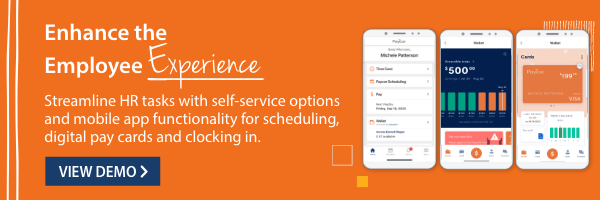In today’s dynamic business climate, HR teams are being pushed into the limelight like never before. With a rise in resignations, they are investing more time and energy to recruiting, hiring, and onboarding, all while navigating increasingly complex compliance regulations. Juggling these challenges alongside the day-to-day administrative tasks can be quite demanding.
The key question now is: How can HR professionals optimize their time and focus on the most crucial priorities, such as nurturing a vibrant workplace culture that retains and engages its employees? In 2023 and beyond, this quest for balance is increasingly important for HR leaders looking to make a meaningful impact on their organizations.
How HR Solutions Drive Efficiencies
The reality is, achieving the right balance isn’t a new problem. Paycor research has shown that 70% of HR teams’ time is spent on inefficient admin tasks, some of which are still paper-based. Finding ways to reduce time spent on transactional and operational HR tasks gives the best performing HR teams a competitive advantage.
Think about it. What would you do with 70%, or even 50% more time? Would you supercharge employee engagement, improve benefits for remote teams, or most importantly of all, investigate ways to retain employees and develop leaders? Before you can do any of that, it’s important to first streamline the existing processes and tasks you’re already doing with the help of technology. Stick around and we’ll show you how Paycor’s HR solution helps you save time while also boosting engagement, improving compliance practices, and offering actionable insights into how your entire workforce operates.
What to Expect from HR Technology Solutions
HR technology is broad—covering everything from recruiting with AI, applicant tracking, staff scheduling, engagement surveys, learning, and more. But you shouldn’t forget about the core HR solution, which provides the tools to help you better manage employees and how they interact with your organization.
Core HR includes managing employee information, performance, goals, and coaching, ensuring compliance with document tracking and storage, and cataloging and tracking assets in a centralized location.
HR technology isn’t just about making HR admin quicker, though: it’s also about providing self-service, including tools available via a mobile app, so managers and employees can interact with your HR system without administrative bottlenecks.
Finally, with these efficiencies and synergies, HR teams can be positioned to think more strategically, aided by the comprehensive tools that an HR solution provides.
Paycor HR in Action
Now, let’s look in more detail at 3 key ways that Paycor HR helps saves HR teams time:
Improved Workflows
Often, it’s not the admin itself that takes up so much time, it’s the unnecessary back-and-forth. This is where workflows come in—by automating these processes, HR teams can speed up outcomes by reducing the time spent tracking progress and approvals.
Take terminations as an example. When an employee leaves the company, many people throughout the organization have input or action items. Supervisors need to give approval, managers of adjacent teams need to be notified, payroll needs to cut final checks and pay out PTO (required in some states), and IT may need to retrieve a laptop and other assets.
Paycor HR enables HR teams to configure these processes and assign tasks which the system will then track and provide reminders for. When one approval is completed, whoever needs to take action next will be notified. Workflows can be applied to all sorts of HR tasks, including tracking important dates such as certification expirations. Rather than HR teams having to track all certifications manually, the system will send notifications when action needs to be taken.
Performance Reviews
Performance reviews are another admin task that can take up far too much time for HR teams, if they aren’t done right. If you’re not doing them at all, you may be missing an opportunity to build a culture of feedback with 1:1 tools and goal-setting that shows employees how they contribute to larger company goals with OKRs.
Paycor enables you to efficiently manage and oversee performance reviews across your entire organization, without having to track and follow up every step of the way. We offer customizable online forms, weighted scoring, and side-by-side feedback. However frequently you want to set reviews, HR just needs to create and assign the task and leave the rest up to managers and employees, who will be notified when they need to provide or acknowledge feedback.
HR Analytics
Analytics is where time saving becomes money saving. Paycor Analytics gives HR leaders the tools they need to not only understand how their organization is really performing but also what changes are needed to improve. Workforce analytics offer a deep dive into the reasons you keep (or lose) your top talent, help analyze your labor cost and how it’s changing, and make sure you are meeting your goals for organizational diversity and pay equity.
With analytics, you’ll have the tools to see and easily understand the data that matters, giving HR the ability to make informed business decisions that truly affect the bottom line. This means that not only is your HR solution saving you time but it’s also giving you the power to transform your role with a new strategic approach.
How Paycor Can Help
Paycor empowers leaders to build winning teams. Our human capital management (HCM) platform modernizes every aspect of people management, from recruiting, onboarding, and payroll to career development and retention, but what really sets us apart is our focus on leaders. For more than 30 years we’ve been listening to and partnering with leaders, so we know what they need: a unified HR platform, easy integration with third party apps, powerful analytics, talent development software, and configurable technology that supports specific industry needs. That’s why more than 30,000 customers trust Paycor to help them solve problems and achieve their goals.










